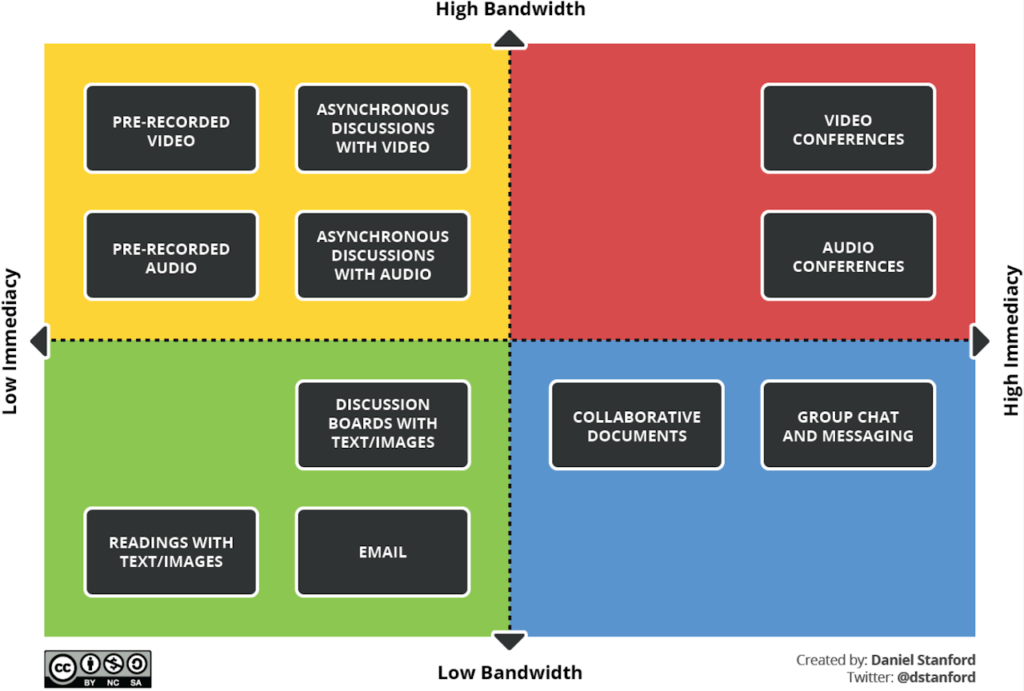When teaching online courses, you are still the subject matter expert and much of what you did in the classroom will still work. But teaching online will also require a fair amount of adjustment, and some of the strategies you relied on in your face-to-face classroom will change.
| OBJECTIVE What do I want learners to know or be able to do after they have finished this lesson? | ASSESSMENT What kinds of tasks or deliverables will reveal that students have achieved the objectives? | ENGAGEMENT What kinds of activities will prepare students to demonstrate understanding? | INSTRUCTION What teaching approaches and materials will help students achieve the objectives? |
Referring back to the Course Blueprint Template, let’s consider: What are the associated learning materials and what teaching approaches will help learners meet the objectives?
You will also need to consider which of these learning materials or teaching approaches should happen with students learning at the same time (synchronously) or students learning at different times (asynchronously).
Asynchronous vs. Synchronous Learning
Maintaining your full in-person class time may no longer be necessary, and adhering to an exact meeting time may be difficult for some students. Remote instruction benefits from—and depends on—opportunities for students to work at their own pace through online discussion boards, recorded lectures, and “homework.” These are all examples of asynchronous learning.
But learners can still benefit from the immediacy of meeting online at the same place and time when online. Technologies like Google Chat and Hangouts and Zoom provide ways for synchronous learning to continue remotely.
As you adapt your course to online, you will need to consider what learning experiences would be most effective if they happened synchronously or asynchronously. Synchronous and asynchronous activities can complement one another. For example, you can provide content for learners to read or watch before your synchronous session on Zoom. You can then use the synchronous session for further discussion or apply the knowledge they learned to a case study or for problem based learning.
NYU Use Cases


Bandwidth & Immediacy
Additional considerations to keep in mind in your decision making process are bandwidth and immediacy. In this context, when we are talking about bandwidth, we are referring to the technology your students have available to them to participate in your course. A newer computer, faster internet speeds, and higher data plans will allow learners to participate in higher bandwidth activities.
In terms of immediacy, consider how essential is it for learners and instructors to respond and interact with one another quickly. Since learners may have varying life situations, the more flexibility you can provide for them to engage with your course, the more effective the learning experience will be.

It’s also important to consider that some students will need other options when one approach doesn’t work for them. For example, just as in the classroom, some students are more comfortable participating in synchronous video conference discussions while others may best express themselves in writing. Similarly, some students might find that creating an audio file or podcast narrative might stimulate their creativity more than writing at this time. Consider offering options, and be sure that all content is accessible to all students, including those who need accommodations.

